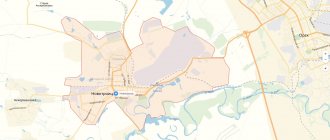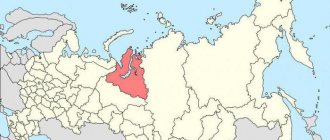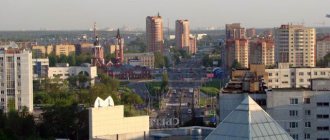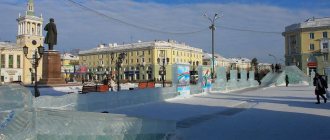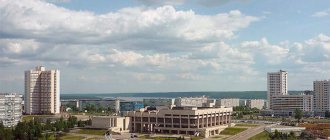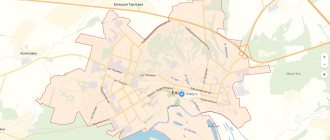Airport
Naberezhnye Chelny does not have its own airport. The city is served by the Begishevo international air harbor, located 27 kilometers from its center in a southwestern direction. In addition to Naberezhnye Chelny, the airport also serves other cities of the republic - Nizhnekamsk, Zainsk, Elabuga and others. In addition, the Begishevo airfield is also used by residents of Izhevsk (despite having its own airport). Interregional buses run daily between the capital of Udmurtia and Naberezhnye Chelny airport.
Basically, Begishevo serves Russian airlines operating both domestic and foreign flights. The main domestic destinations are Moscow, St. Petersburg, Sochi, Simferopol, Rostov-on-Don, Yekaterinburg, Krasnodar. International routes usually open during tourist seasons. The main destinations are Antalya, Dalaman, Monastir.
From Naberezhnye Chelny and its suburbs, Begishevo can be reached by public transport - buses and minibuses that run daily between the city and the airport.
Business center of the city
The smooth transformation of Naberezhnye Chelny into a big city involves a number of changes in the course of life and human preferences. Developers keep this principle in mind and strive to satisfy the needs of customers as much as possible. Only wealthy people can afford housing on Mira Avenue, but there is something to pay for here. But when looking for commercial real estate, there is no better place than complexes in the center. In the Central region there is a huge traffic volume of up to 700 people per hour. And at least four thousand cars pass per hour. A good place for the construction of the CityLine TDK. In the future, the area will embody the entire business elite of the city. The complex was built with the latest technology and equipped with utilities. The space is very ergonomic, and only high-quality materials are used in decoration. There are already more than a hundred tenants in the CityLine TDK, but this is not the limit, because the point brings substantial profits to furniture and computer stores, banks, accounting offices and shops.
Train Station
The Naberezhnye Chelny passenger railway station is located on the southwestern outskirts of the city on Musa Jalil Avenue, 7 (Sidorovka village). Commuter (short) and interregional (long-distance) trains and commuter trains run from the railway station. Routes operate year-round from Naberezhnye Chelny to Moscow, Perm, Izhevsk, Ulyanovsk, Perm, Volgograd and Sochi (Adler) with stops in intermediate settlements. The most popular intercity and suburban destinations are Kazan, Bugulma, Zelenodolsk, Agryz and others.
According to the seasonal schedule, trains from Naberezhnye Chelny depart to Krasnodar, Saratov, Dimitrovgrad and other destinations.
Administrative division
Conventionally, the city’s territory can be divided into three large districts: Komsomolsky, Central and Avtozavodskoy. Each of them has its own executive bodies. The Komsomolsky district includes the villages of HPP, ZYAB, Sidorovka, Surovka, Orlovka, and Elevatornaya Gora. In addition, the Zamelekesye microdistrict, BSI and Energoraion are adjacent to this area. The central area covers the main industrial and municipal facilities southwest of Highway No. 2, as well as a medical campus and about 36 complexes. Avtozavodskoy district seems to be the most suitable for family living, as it includes areas of low-rise residential buildings, industrial facilities north of highway No. 2, Togaevsky quarry and approximately 26 complexes. In Avtozavodskoye, the construction of new houses is much more active than in other areas, but the time between commissioning is sometimes delayed. Sales here, by the way, are also the most active, since the environment for purchasing housing is the most favorable, there are many green spaces and developed infrastructure, but the level of air pollution is not so high.
Bus station in Naberezhnye Chelny
The Naberezhnye Chelny bus station is doubled with the railway station, i.e. located in the same place - in the village of Sidorovka on Musa Jalil Avenue, 7. The bus station is one of the largest in Tatarstan. Buses from here depart to many cities and small towns in the republic itself and neighboring regions.
The most popular interregional bus routes are Izhevsk, Perm, Togliatti, Samara, Sterlitamak, Ulyanovsk, Ufa, Ukhta, Cheboksary, Yaroslavl, Orenburg, Yekaterinburg and others. For most interregional destinations, buses depart daily or at least several times a week.
From the Naberezhnye Chelny bus station you can get to almost any locality in the Republic of Tatarstan, including remote villages. In addition, 2 times a week a bus departs from the station to the city of Aktobe in Kazakhstan - at the moment this is the only international route.
NABEREZHNYE CHELNY
NABEREZHNYE CHELNY, a city in Russia, in the north-east. parts of Tatarstan, the center of the city district of the same name and the Tukaevsky municipal district. Us. 532.1 thousand people (as of 1.1.2021); the second largest city in Tatarstan after Kazan. N. Ch. is one of the centers of the urban agglomeration (over 1 million inhabitants), which also includes the cities of Elabuga, Nizhnekamsk and others. The port is on the left bank of the Nizhnekamsk reservoir (on the Kama River). Railroad station. Road junction. Begishevo International Airport (southwest of the city).
Story
Naberezhnye Chelny. Panorama of the city.
In 1626, a group of Elabuga peasants led by F. Popov founded the settlement of Chalninsky Pochinok (from the late 1640s, the village of Mys-Chelny, later Mysovye Chelny, from the 1920s, Krasnye Chelny). From 1630–40s existed s. Embankment Sloboda (Berezhnye Chelny, from the 1910s N. Ch.). In 1650, the Chelny fortress was built to protect them from nomads (dismantled in 1652). All R. 17th century fairs were held in Mysovye Chelny and Naberezhnaya Sloboda. In the 2nd half. 17 – 1st half. 18th centuries villages were repeatedly ruined during the Bashkir-Tatar uprisings; During the Pugachev uprising of 1773–75, their residents were mobilized into the rebel troops and supplied them with food. In the beginning. 19th century at the village Berezhnye Chelny, the Chelny wharf arose (it specialized mainly in grain transshipment, from the early 1840s one of the largest in the lower reaches of the Kama), used to ship through it. including cargo from fairs held in Menzelinsk; offices of large shipping companies operated. In 1912–17, an elevator (the third in terms of storage volume after Novorossiysk and Samara) and an industrial facility were built here. enterprises. In 1921–26, from 1930 the city of N. Ch. (in 1926–1930 the village of Chelny). Center of the Naberezhnye-Chelninsky (Chelninsky) canton (1921–1930), Chelny district (since 1930, renamed Tukaevsky in 1976) of the Tatar Autonomous Soviet Socialist Republic, Tatar SSR (1990–92), Republic of Tatarstan (since 1992). In the 1930s the village became part of N.Ch. Red Chelny. Development of the city in the 2nd half. 20th century associated with the development of oil fields in the southeast of Tatarstan, the construction of the Nizhnekamsk hydroelectric power station and the Kama complex of factories for the production of heavy-duty vehicles (KAMAZ). In 1982–88 the city was called Brezhnev (in honor of L.I. Brezhnev). In 1984, the villages of Orlovka, Sidorovka and others were included in the city; in 2006 – p. Borovetskoye (all known from the 1630s–40s). Since 2005, the center of the city district of the same name and the Tukaevsky municipal district. In 2016 it received the status of a territory of rapid socio-economic development.
Archeology
On the territory of the city, settlements and burial grounds of the Srubnaya culture (Naberezhnye Chelny, Betkinsky, etc.) and the Prikazansky culture (Krasnoklyuchinsky, Kzyltauskoye), settlements of the Imenkovsky culture (Naberezhnye Chelny, Chabyinskoye), and the remains of the Bulgar and Bulgaro-tats were studied. settlements of the 13th–16th centuries. (Orlovskoe, Samoskakovskoe, etc.).
Architecture
Naberezhnye Chelny. Matrimonial Palace. 2007–08. Architects E. N. Pestov, S. G. Popov.
Preserved: c. Saints Cosmas and Damian (1845–59) and the Holy Ascension Cathedral (1872–89) in the Russian-Byzantine style, merchant. houses and shops on the street. Central (late 19th – early 20th centuries), former. the dacha of the merchant D.I. Stakheev on the shore of the Nizhnekamsk reservoir (1908–09; since 1927 the Tarlovsky sanatorium), the Chelny elevator (1914–17). In the 1970s–80s. the city was built up according to the 1973 general plan (architect B. R. Rubanenko and others) with a rectangular layout of “complexes” and wide, extended avenues. The following buildings were erected: 9- and 12-story buildings, lined with shuttle tiles; KamAZ stadium (1975–1977), Transagency building (1977, architect G. Burkov), 14-story Tatarstan hotel (1977–78, architects M. Kh. Agishev, R. Kh. Nasyrov, M. G. Khairullin). In 1982–91, Enthusiasts Boulevard was decorated with monumental compositions (the sculpture “Guardian Angel” by I. M. Khanov, 1991). In the 1990–2000s. built: 24-storey City Center Hotel (1980s – 2008), Ice Sports Palace (2005), Wedding Palace (2007–08, architectural workshop of E. N. Pestov and S. G. Popov) ; mosques (including the Great Cathedral “Taube”, 1989–92, architect M. Basyrov; “Abuzar”, 1993, architects V. A. Manukyan, T. G. Ulatova; “Ikhlas”, 1993–2005, architect Manukyan) and churches (St. Seraphim of Sarov, 1996–2005; wooden Old Believer church of the Prophet Elijah; wooden church of the Nativity of Christ, 2009). Monument of Glory (1975, sculptor Khanov, architect Nasyrov). To the north on the outskirts of the city is the Borovets Keys natural monument with a landscaped pond ensemble. Near N. Ch. preserved: classic. Church in honor of the Vladimir Icon of the Mother of God (1814) in the village. Betki, Trinity Church (1835–52) in the village. Novotroitskoe.
Centers of science and culture
Naberezhnye Chelny State Pedagogical University (1990), a number of non-state universities, branches of universities in Kazan, Moscow and Nizhny Novgorod. Center. mountains b-ka (1972; 29 branches). State Museum of the History of the City (1972), Museums of the History and Military Glory of the Automobile Troops (1986), Ecology and Nature Conservation (2000). Art Gallery (1980; branch of the State Museum of Fine Arts of the Republic of Tatarstan). Russian dramatist. theater "Masters" (1975), puppet theater (1987), Tat. dramatic theater (1990). Concert halls: them. S. Sadykova (1988), Organ (2005; an organ from the Czech company “Riger Closs” is installed in the hall). Chamber orchestra "Province" (1989). Festivals: international puppet theater “Workhorse” (since 2008, once every 2 years), regional theater “Characters” (since 2005, annually), “Organ Assemblies” (2010).
Sport
Among sports competitions, the most popular is football (the KAMAZ team was founded in 1981; a participant in the Russian championships in the top division 1993–97; in the 2020/21 season it plays in the championship of the Professional Football League at the stadium of the same name, built in 1977, reconstructed in 2016 and accommodating 6.2 thousand spectators) and rally [crews of the KAMAZ-Master team, 1988 – 17-time winners of the prestigious Dakar rally (formerly Paris-Dakar) in 1996–2020]. The largest sports facilities in N. Ch. are the Stroitel stadium (1979; more than 9 thousand seats) and the Ice Sports Palace (2004; 1.5 thousand seats).
Farm
N. Ch. is one of the leading industrial centers of Tatarstan. The largest enterprise - the group (1969; leader in the production of heavy trucks in the Russian Federation) produces trucks, trailers, buses, electric buses, special vehicles, engines, and power units. Operating (2010; large-scale assembly of Mercedes-Benz and Fuso trucks).
Production of metal pipes and piles (Naberezhnye Chelny Pipe, 2007), lifting equipment (Naberezhnye Chelny Crane Plant, 1997), electrical installation products, power line supports (electrical installation products plant - branch "Tatelektromontazh", 1977), electrical equipment for dump trucks, excavators, electric vehicles (" Transport Electrical Equipment Plant", 1976), filters and filter elements for cars, agricultural and construction equipment, etc. (1990), plastic products (Technotron company, including plastic spare parts for KAMAZ), corrugated packaging, toilet paper (“National Enterprise Naberezhnye Chelny Cardboard and Paper Mill named after S.P. Titov”).
The following factories operate: large-panel house construction, reinforced concrete structures, cellular concrete, sand-lime brick.
Among the large food industry enterprises are a bakery plant (a large producer of flour, cereals and animal feed in Tatarstan), the Chelny-Khleb group of companies (bakery and confectionery products), meat and dairy plants, companies producing poultry products (Chelny-Khleb Broiler"), ice cream, semi-finished products and fish products ("Cold"), the Bulgarpivo brewery (established in 1981 as the Naberezhnye Chelny Beer and Soft Drinks Plant, its current name since 1994).
Nizhnekamsk hydroelectric power station (1979; 1205 MW), thermal power plant (1971; 1180 MW). In the industrial zone of the city there is the Orlovskoye oil field.
Automobile highways
One federal highway M7 “Volga” passes through Naberezhnye Chelny, leading in a north-west direction to Moscow through Kazan, Nizhny Novgorod and Vladimir, and in a south-east direction to Ufa. Branches have been made from the highway to Ivanovo, Cheboksary, Perm and many other intermediate cities. Thus, Naberezhnye Chelny is connected by the Volga highway with the Moscow, Vladimir and Nizhny Novgorod regions, the Chuvash Republic and Bashkortostan.
If we take into account that another federal highway M5 "Ural" intersects in Ufa with the M7 "Volga" road, then we can talk about the presence of a direct road connection between Naberezhnye Chelny and Samara, Penza and Ryazan in the western direction and with Chelyabinsk and Yekaterinburg in the eastern direction.
Culture
If we consider Naberezhnye Chelny as a place of residence, then it is worth paying attention to the issue of education and cultural richness of the area. There are 47 universities in the city, so potential applicants and their parents always have a choice. Technologists will no doubt be interested in the Kama Academy of Engineering and Economics, the Naberezhnye Chelny Institute of Trade and the Institute of Advanced Technologies and Business; managers will like the corresponding Institute of Management or the Kama Academy, and creative people are always held in high esteem at KIID (Kama Institute of Arts and Design) and NISPTR (Naberezhnye Chelny Institute of Social-Pedagogical Technologies and Resources).
Local youth may be interested in enrolling in branches of other universities, such as KAI from the Kazan Technical University, NGLU from the Linguistic University of Nizhny Novgorod, MGSGI from the capital's Humanitarian University and many others. The State Drama Theater with the Batyr entertainment complex and the Illuzium cinema are responsible for cultural life. In addition, there is a puppet theater, fashion and Russian drama. The doors of the Klyuch theater-studio, as well as the city art school, are open to young people. There are several cinemas in the city and all of them are original: in addition to the good old Illuzium, there is the Cinema Park animation complex and a real drive-in cinema, Favorit. The history of the city and region can be clearly studied in the state museum, from where you can head to the museum of military glory, ecology and memory of Vysotsky. Next you will go through the art gallery, the Kamaz cultural center and the organ hall. Since the population is heterogeneous, for many the true cultural values will be religious places, namely mosques.
Cherepovets
The inhabitants of this city are often called metallurgists, where almost half of the local population is employed in metal production. Cherepovintsy, Cherepovchane, Cherepovtsy, Cherepovichi. Is there a correct name among these words? Eat! The Cherepovites will be right and nothing else.
Gus-Khrustalny
Again, a compound name of the city, famous for its crystal factory, where glass and crystal are made. Usually people call local residents with complex words, for example, Gusevchane, Khrustalchane, Gus-Khrustalchane. The first option is correct, but the population itself prefers to call themselves Gusevites to make it easier.
Vologda
Who lives in this city - Vologda residents, Vologda residents, Volograd residents? Close, but wrong. The local residents should be called Vologda residents. It is interesting that people associate this city with Siberia, because people were also sent into exile here, in particular, Joseph Stalin served his sentence here.
